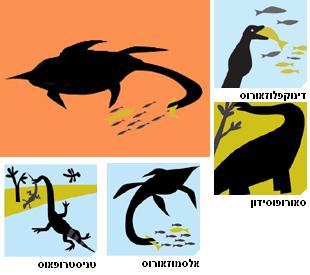An unusual fossil discovered in China shakes up theories about long-necked creatures

There is nothing interesting about the (relatively) new giraffes compared to the strange long-necked creatures that roamed the earth millions of years ago. Chan Li, a paleontologist from the Chinese Academy of Sciences, recently discovered a new addition to the already known variety, a marine reptile called Dinocephalosaurus orientalis that lived 230 million years ago.
Before the discovery of the monstrous-headed lizard, paleontologists believed that marine reptiles caught their prey by moving their necks around like slippery eels. Lee's lizard, with its neck stretching to 150 centimeters, may have had its own hunting style. Swimming dinosaurs typically used their elongated necks to sneak up on unsuspecting prey, hiding their clumsy bodies in the murky water behind tiny heads. The long necks of most aquatic reptiles served as a form of deception. But the dread-head had another trick: when approaching its prey, the reptile would contract its neck a little, then swing forward and open its mouth, drawing water and fish into it at the same time, like an underwater vacuum cleaner. Lee's discovery shows that there is more to the physiology of dinosaurs and reptiles than previously thought. Below is what was known so far and the questions raised by the new discovery.
Tanystropheus
Geological age and environment: 210 million years ago; Triassic. Lives in Asia and Europe, possibly both in water and on land.
Feeding habits: Uses its long neck to catch fish in shallow water or small lizards near the shore.
Physiology: His neck, which reached 3 meters, was longer than the length of his body and tail combined. Not particularly suitable for either water or land.
Question Marks: At least 4 controversial necks and body positions; It may have expanded its throat like the dinosaur orientalis.
Dinocplosaurus
Geological age and environment: 230 million years ago; Triassic. lives only in water; Discovered near Guizhou Province in China.
Feeding habits: A long neck that can be stretched allowed it to sneak up after the hunt, and then suck up its prey and water together.
Physiology: Scientists have concluded that it feeds by suction from a long, thin neck rib that expanded outwards.
Question marks: the remains of a jaw and teeth raise the hypothesis that he caught his prey like a crocodile.
Sauroposidon
Geological era and environment: 110 million years ago; Cretaceous. Terrestrial; Wander through present-day Oklahoma.
Dietary habits: This giant, whose body length reached 27 m and whose neck was 12 m, probably ate vegetation in hard-to-reach places.
Physiology: The length of each of the seven neck vertebrae reached more than 120 cm.
Question Marks: He may not have been equipped with muscles to keep his neck vertical. So use it as leverage.
Elsmosaurus
Geological age and environment: 69 million years ago; Late Cretaceous. His origin is from North America; He was able to swim thousands of kilometers.
Dietary habits: long neck, sharp teeth and a relatively small head, allowed it to leap suddenly and grab small minnows for a meal.
Physiology: With 71 vertebrae in 7.8 meters of neck, this creature had a unique ability to stoop.
Question marks: an elongated neck forced it, perhaps, to swim on the surface, and dive only to obtain nearby prey.
